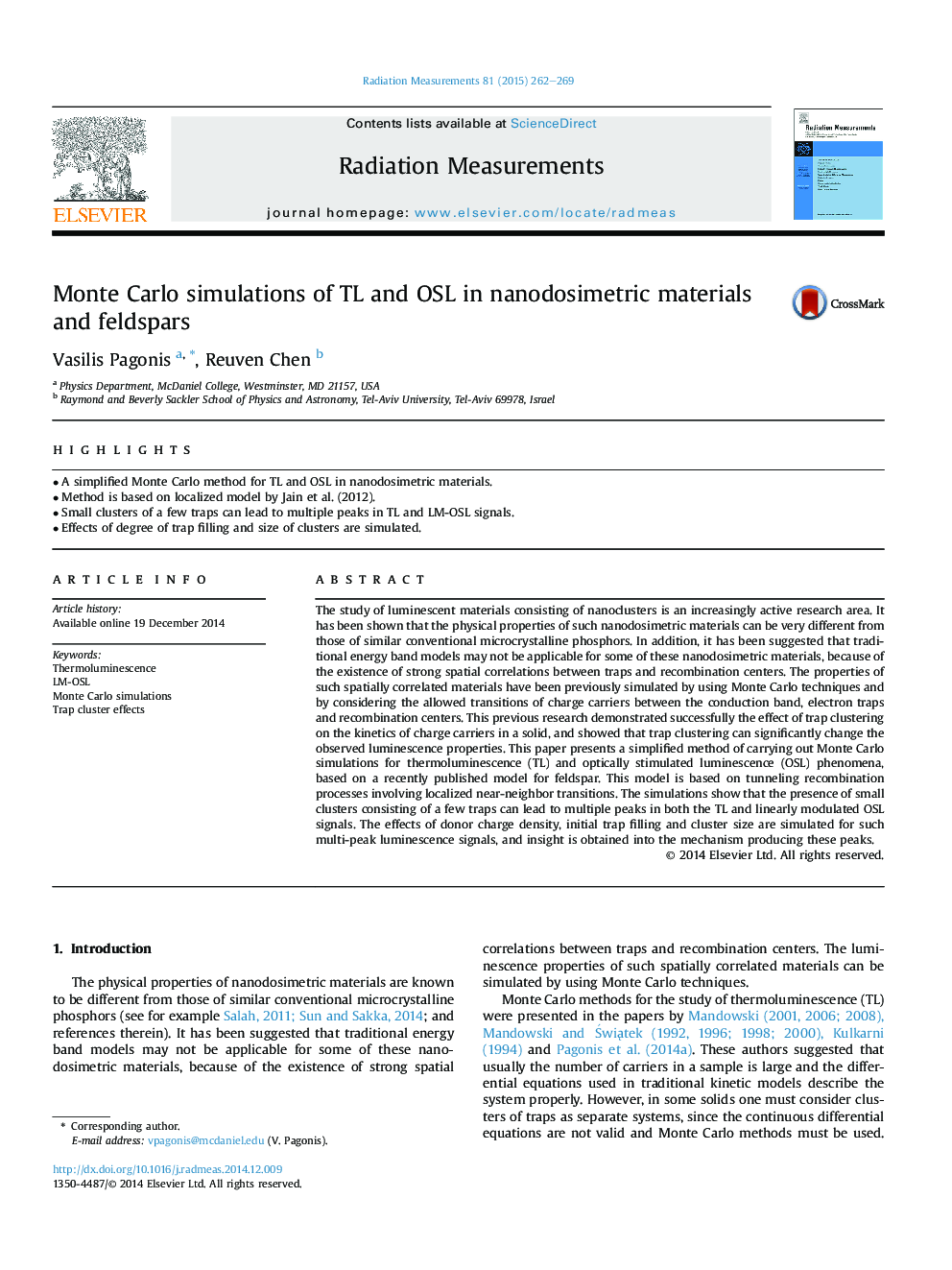| کد مقاله | کد نشریه | سال انتشار | مقاله انگلیسی | نسخه تمام متن |
|---|---|---|---|---|
| 1883285 | 1533409 | 2015 | 8 صفحه PDF | دانلود رایگان |

• A simplified Monte Carlo method for TL and OSL in nanodosimetric materials.
• Method is based on localized model by Jain et al. (2012).
• Small clusters of a few traps can lead to multiple peaks in TL and LM-OSL signals.
• Effects of degree of trap filling and size of clusters are simulated.
The study of luminescent materials consisting of nanoclusters is an increasingly active research area. It has been shown that the physical properties of such nanodosimetric materials can be very different from those of similar conventional microcrystalline phosphors. In addition, it has been suggested that traditional energy band models may not be applicable for some of these nanodosimetric materials, because of the existence of strong spatial correlations between traps and recombination centers. The properties of such spatially correlated materials have been previously simulated by using Monte Carlo techniques and by considering the allowed transitions of charge carriers between the conduction band, electron traps and recombination centers. This previous research demonstrated successfully the effect of trap clustering on the kinetics of charge carriers in a solid, and showed that trap clustering can significantly change the observed luminescence properties. This paper presents a simplified method of carrying out Monte Carlo simulations for thermoluminescence (TL) and optically stimulated luminescence (OSL) phenomena, based on a recently published model for feldspar. This model is based on tunneling recombination processes involving localized near-neighbor transitions. The simulations show that the presence of small clusters consisting of a few traps can lead to multiple peaks in both the TL and linearly modulated OSL signals. The effects of donor charge density, initial trap filling and cluster size are simulated for such multi-peak luminescence signals, and insight is obtained into the mechanism producing these peaks.
Journal: Radiation Measurements - Volume 81, October 2015, Pages 262–269